Google’s Freshness Algorithm Update and SEO
You might have heard about Google’s freshness update. Especially regarding the relationship between good SEO and fresh content.
But what does this mean and how does freshness factor in to how your website ranks in search engines?
It is true that content freshness is a ranking signal for the famous search engine and this means that it’s something that can effect your sites performance over time. If the subject matter of your site’s content is something that changes over time or that often needs to be updated, then you could eventually drift down the search results, passed by competitors with fresher info.
The Google freshness update became part of the algorithm in 2011. In fact the freshness algorithm change came in the foots steps of the earlier 2010 “caffeine update” which totally changed the way that Google indexed web pages.
It would also be important for the history of Google’s other updates and changes.
The Caffeine update meant that pages would be recrawled and indexed by Google far more frequently than previously, whereas before some pages could go many weeks without being recrawled. With the Caffeine update pages could be updated in search results much more frequently, and searches could be more reliable. This also meant that the later Google freshness algorithm update could be made possible.
For your online company or website, content can be critical to growing your business online. Content is fundamental not just to search optimization, but to almost every digital marketing strategy. That’s why modern marketing still claims that “content is king.” In fact determining your SEO’s fresh content performance is one reason why content marketing is so important.
When Google’s freshness algorithm was released, it was changing how business had to approach their content strategy.
What was the Google freshness algorithm update?
This update was aimed to give a fresher content a more prominent edge in rankings, especially for content where freshness is important.
Queries for things like “election polling results” or “who won Sunday’s football game” or “which brand of laptop is cheapest” rely on information that could change frequently and could be different on a daily, weekly, or monthly basis.
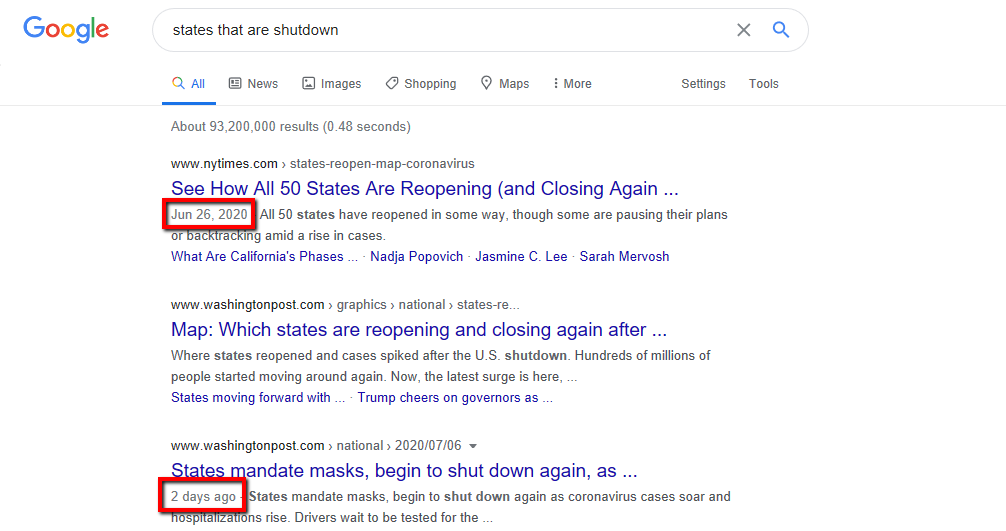
When Google rolled out the freshness update it impacted as much as 35% of all search results. It also meant that for SEO, fresh content was now an important consideration. Marketers, webmasters, and content creators would have to consider how evergreen their subject matter was, and how long ago it was created.
One of the ways that Google’s freshness algorithm works is by measuring the relative freshness of a specific page in regards to the volume of new content about that topic. The importance of “freshness” is greater for some search queries than it is for others, and Google is able to determine this by making note of the frequency of content created for some topics. For example the more website/bloggers writing about certain topics, the more rapidly changing it might be, and the greater importance of “freshness” is required for it.
This is particularly evident in broad queries or “head terms.” A blog from Moz’s Rand Fishkin discusses this element of the update after its release, where broad, high-traffic queries like “football” and “wall street” are much more likely to see movement based on freshness.
This means that sites with highly competitive, short-tail keyword rankings will have to pay much more attention to the freshness of their content in order to maintain traffic.
Of course timely keywords, events, and rapidly evolving subjects like sports, news, and pop-culture are a few areas that are subject to the Google freshness algorithm update. As a matter of fact, Google’s announcement on the update also gave some guidance on topics where SEO with fresh content is important:
- Recent events or hot topics: Topics that are trending on the web or happening rapidly, people want to be able to get the latest information possible. According to Google, breaking news events can feature results that might only be a few minutes old.
- Regularly recurring events. Regularly scheduled events like annual conferences, elections, monthly events, etc.
- Frequent updates. This includes things that might not necessarily be a “hot topic” but are still something that people would want the latest information on such as new produc reviews, car model year information, etc. For many businesses and eCommerce sites considering the importance of SEO fresh content, this is the one area where Google’s freshness algorithm update is most important.
Query Deserves Freshness
Some marketers have begun to spread the notion of a Google freshness “score.” Google hasn’t ever acknowledged a measurable score that determines the freshness of a site or its content, and it definitely doesn’t give webmasters a way to know such a thing.
However, Google’s freshness update does hinge on a concept built into their algorithm known as “query deserves freshness” (or QDF). QDF is the closest thing to a Google freshness score, and is the way that Google determines which search queries require “fresh” results and which ones may do well enough with evergreen results.
Basically, as we described above, Google’s freshness algorithm is designed to only affect searches for topics that are found to be “hot” or trending based on volume of newly published content. Along with topics that are otherwise regularly unstable. The QDF model measures how many new blogs, news articles, or websites are being created about a topic and determines that that topic is likely one where users want the freshest search results possible.
How to check your site SEO freshness
Creating or optimizing for SEO fresh content will depend largely on whether your business or content exists in a space where freshness is important. The truth is having fresh, relevant and up-to-date content is inherent to almost every industry or business, but it’s more important in some areas than others. Not every website is dragged down by the Google freshness update.
The best thing to do here is ask yourself if your business works in an industry where customers required the most update to date info, and whether your content is able to offer them that. In SEO, the end goal for all of your site’s content should be to help customers.
Next, you can verify if your older content is performing worse over time.
Data from Google Analytics or Search Console can help you discover areas of your site that may be losing traffic over time. Both of these resources allow you to perform period-over-period (POP) or year-over-year (YOY) comparisons to find pages on your site that have lost traffic, and that may be affected by Google’s freshness algorithm update.
In your Analytics account you can go to the report you want to check. For understanding search traffic, it’s best to go to the Behavior > Landing Pages report and then filter by the “organic traffic” segment.
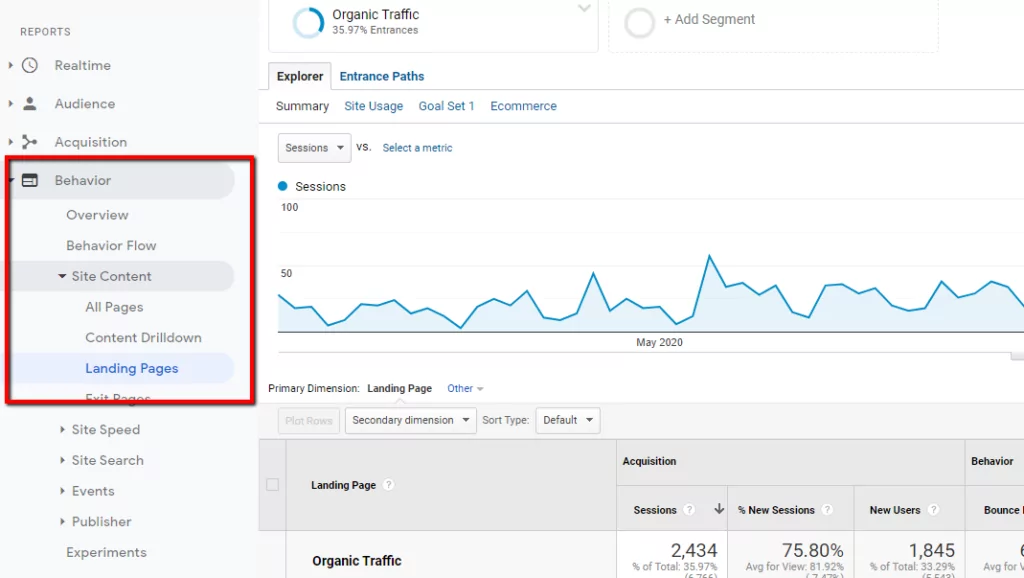
This will give you a good idea of how users are “landing” on your pages from search engines.
From here you can use the date range to compare by previous period, previous year, or with a custom range.
There’s no way to know for certain if your site has been hit by the freshness algorithm or even to know which pages specifically. But, if you find that older pages on your site have steadily dropped as years or months go by, it may be because they have slowly become less relevant.
The search console Performance report can also help you verify. Check URLs here with the same YOY or POP timeframe and see if the “average ranking” or “impressions” have declined. These are clues that could suggest you have lost rankings for some keywords. In fact, being able to track keyword performance data is a big part of what Google’s Search Console is used for in business. You can incorporate this tool into your overall SEO strategy.
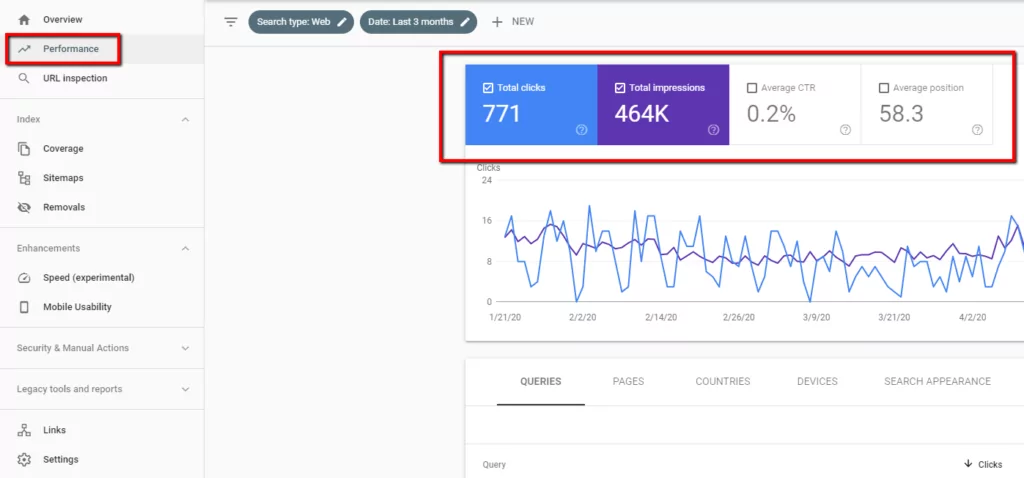
You can also use tools like Google Trends to better understand search trends for your specific keywords. It’s possible that a decline in traffic is for social reasons or simply just fewer searches, and not because the freshness algorithm update has had any effect on your site. This is why many companies see the value in have an SEO team or a professional agency help with SEO. It possible that lost traffic could be for a wide range of algorithm factors, so understanding your site’s SEO as a whole will be important before you make drastic changes.
Being able to track performance data, diagnose algorithm affects, and fine-tune fresh content for SEO is a big part of being able to maintain search traffic.
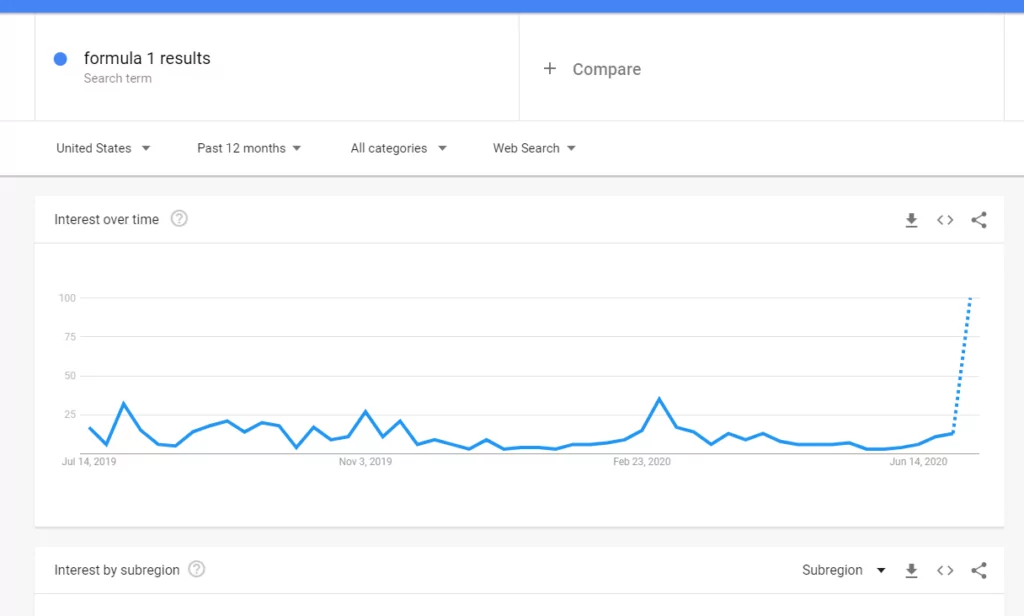
Optimizing your site for SEO fresh content
Here are some best practices for making sure your site is able to perform better under Google’s freshness algorithm. Afterall, you’ll want to know what to do if you find that your content may be suffering from staleness.
Should you just update the existing content? Should you delete the page and create a new one? Should you totally rewrite the content from scratch?
It depends. And the truth is there’s no exact right way to address it, but as usual you should always create or edit your content with your end users in mind.
Main Site Pages and Nav-Bar Pages
In these cases you may want to consider only updating content when the information is not relevant to the current time period or if the research or info is no longer true.
In reality it’s not necessarily recommended to complete rewrite or recreate content from scratch. Unless that page has zero keyword rankings or very little traffic – in which case there’s not much to lose. If your URLs have some page 1, 2, or page 3 keyword rankings it’s generally best to merely update the content. If those keywords are relevant, bolstering them with other SEO strategies could be a better way to improve the pages authority.
You’ll want to make sure your content is designed to help visitors meet their needs and that it is written for EAT (expertise, authority, and trustworthiness). Google’s Search Quality Valuator Guidelines have outlined concepts that mean its human reviewers can look for ways of determining a page’s EAT.
Those same guidelines also layout some guidance on defining freshness, meaning that content freshness is an important element for human assessments of site quality. Evaluation is based on whether a search could reasonably find their “needs met” based on the page’s content.
This should be your guide for SEO fresh content strategy.
Blog Posts
Blog posts and similar pages tend to be the most effected by Google’s freshness algorithm update. Partially because common site design means that blog posts tend to get pushed further away from the homepage, or a greater number of clicks away from relevant pages.
If you’ve found that your older blog posts have lost traffic or have sunk to the bottom of your Analytics reports it may be worthwhile to update them and republish them.
- Rewrite blog posts with up-to-date info, relevant current context, and with recent and trustworthiness sources/research. Ensure that “freshness” also means “needs met” for your readers.
- Curate the new content to focus on relevant keywords, if your blog was originally targeting keywords that are now no-longer bringing in search traffic, do some new keyword research and find the closest similar keywords. Remember that they must be relevant and accurate!
- Rewrite your blog content for EAT. Making sure that your content features good expertise, authority, or trustworthiness is the best way to demonstrate to your human visitors that your content is valuable.
- If you republish the page make sure to keep the same URL so that you can maintain the page authority of the original page. If you republish your blog posts at a new URL make sure to redirect the old URL to the new version of the page.
When you update and publish blog posts on some content-management-systems (CMSs) they often include a time-stamp or date that can appear in the search snippet. This can tell both Google and visitors when the original blog was published, or when it was updated.
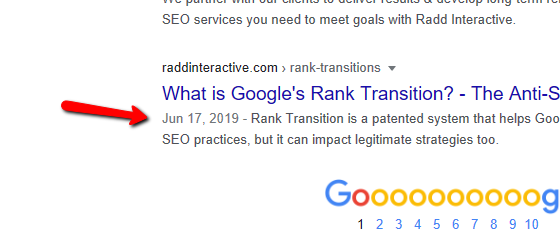
We don’t recommend just republishing a blog post without updating the content, just to show a new timestamp. The content will still match with the old content in the index and Google may see this as an attempt to dishonestly manipulate rankings, resulting in a manual action penalty.
Learn More
Contact Radd to get more information about Google’s freshness algorithm and for advices on how to improve your site with strategic SEO services and professional work.
